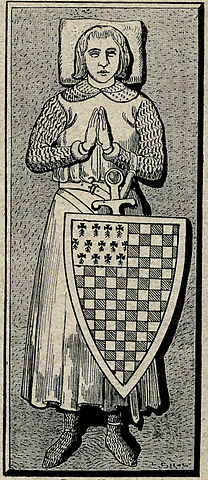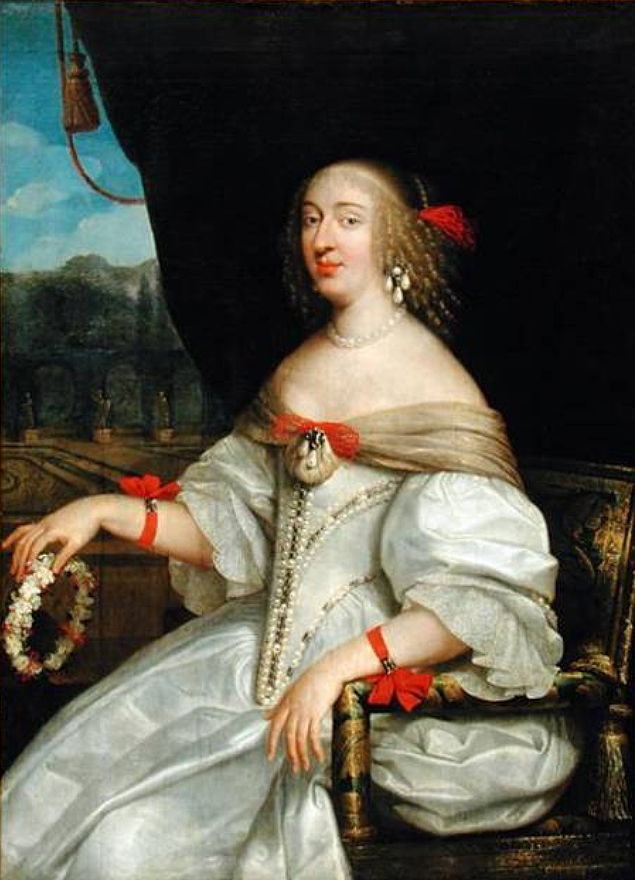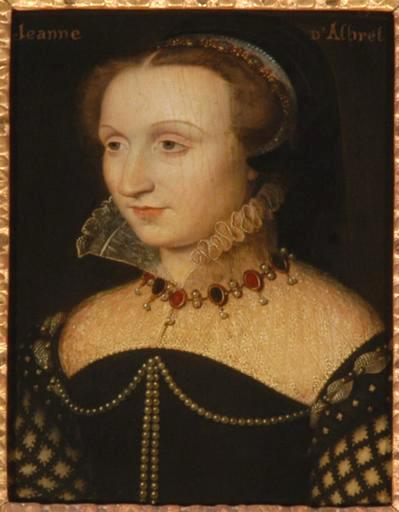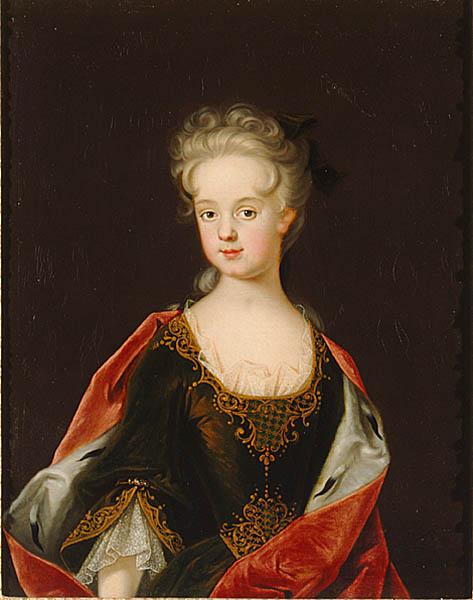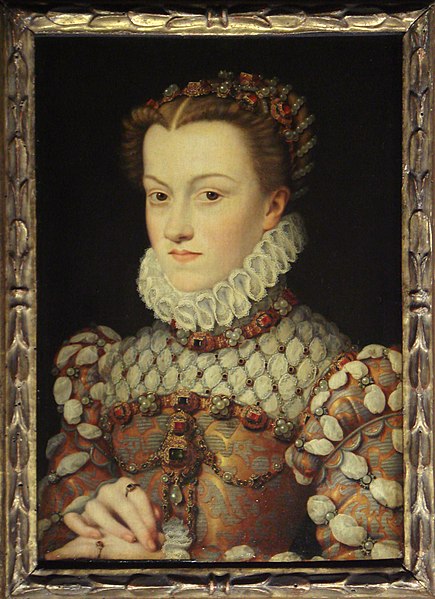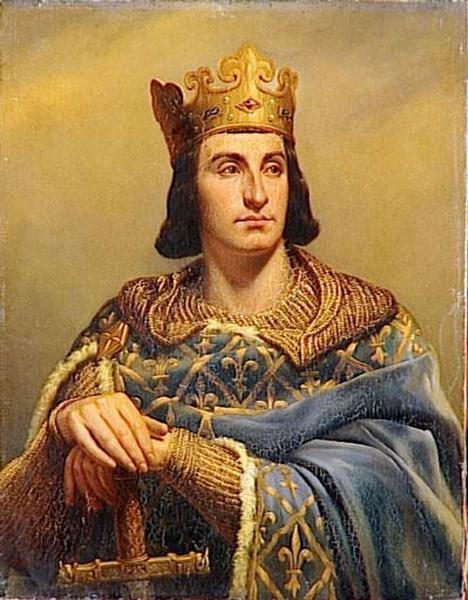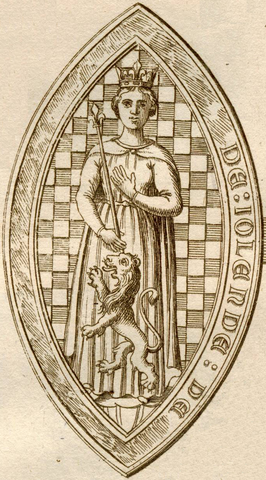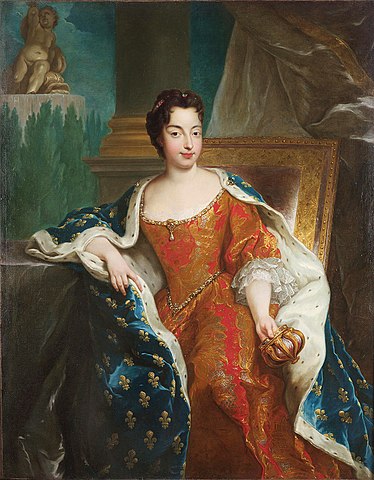August 2, 1330 death of Yolande of Dreux, Queen Consort of Scotland. She was Countess of Montfort in her own right.
Yolande was born in 1263.
Yolande's father was Robert IV, Count of Dreux. Her mother Beatrice was Countess of Montfort-l'Amaury in her own right. Beatrice was the daughter of John I Montfort who died when she was one on the seventh crusade. Yolande was the second of their six children, with three sisters and two brothers. Her father was succeeded by her brother John II.
Alexander III of Scotland was in need of a new wife. His wife Margaret of England (sister of Edward I) had died in 1275. Unfortunately all three of their children had died, the last being Alexander in 1284. His only heir was his granddaughter Margaret of Norway, the child of his daughter Margaret and her husband Eric II of Norway. Margaret was a year old when her Uncle Alexander died. Alexander III had been considering a bride since 1281 after the death of his youngest son David but the process sped up with the death of his last child. Yolande was the choice of Marie de Coucy, the Queen Dowager of Scotland, for her son. Marie de Coucy who died in the summer of 1285 was related to the Dreux family. A marriage to Yolande would also further separate Alexander from the influence of his brother in law Edward. Marie would not live to see the marriage as she died in June.
Yolande was accompanied to Scotland by her brother Jean. She married Alexander October 15, 1285 at Jedburgh abbey. The wedding was attended by nobles from France and Scotland. She was 22 and her husband was twice her age at 44.
The marriage was short lived as Alexander died March 18, 1286 barely five months later. The king had been riding to Fife to meet his wife when he got separated from his guides. He was found in the morning, having fallen from his horse and breaking his neck. He was buried at Dumferline abbey.
Yolande was pregnant at the time and was moved to Stirling castle. She was to serve as guardian until either her child or Margaret of Norway came of age. Her child would take precedence over Alexander's granddaughter. Its not clear what happened to the child though. The child was either stillborn or died shortly after birth. It seems from some records that the baby was still born in November. After the loss of the baby, preparations were being made for Margaret of Norway to be brought to Scotland.
Its unclear when she returned to France. She is noted having been in Scotland as late as 1288. She remained at Stirling castle during the time.
In 1294 she was back in France as she married her second husband. This time she married Arthur II, Duke of Brittany. Arthur was a grandson of Henry III of England. His mother Beatrice was the sister of Edward I and of Yolande's predecessor in Scotland, Margaret. Arthur was only 2 years older then her, born in 1261 making the groom 33 and the bride 31 when they were married.
Like Alexander, Arthur had been married prior to Yolande. His first wife was Marie, Viscountess of Limoges. He had married her at 14 and they had three children before Marie died in 1291. Marie and Yolande's parents were cousins. Marie's mother Margaret and Yolande's father Robert were the grandchildren of Robert III of Dreux.
Her stepchildren:
-John: was 7 when his father remarried. succeeded his father as John III of Brittany. He was married three times, but had no children. He hated his stepmother and tried to deny the throne to his half-brother and leave it to the French crown instead.
-Guy: was around 6 when they married. He died 10 years before John in 1331. He was married to Jeanne d'Avaugour and had at least one child, a daughter Joan who succeeded her father as Countess of Penthièvre. Joan was married to Charles of Blois and they would eventually rule as Duke and Duchess of Brittany after the Breton war of succession.
-Peter: Seigneur of Dol-Combourg and Sant-Maloù. He died in 1312 at the age of 23.
At the time of their marriage Arthur was only heir to the Duchy as his father died in 1305 at 66 years old. Arthur's mother though had died in 1275. Arthur would only serve as Duke for 7 years as he died in 1312 at 51. In 18 years the couple welcomed 6 children, only one of whom was a son.
-John: known as John Montfort. He inherited count of Montfort-l'Amaur from his mother. He married Joanna of Flanders and had two children. Due to his half brother trying to deny him the throne, the war of Bretton succession took place when John succeeded as Duke of Brittany. His son John would eventually claim the duchy and become John IV.
-Beatrice: Married Guy X, Lord of Laval. They had at least 2 sons. The title was inherited by both sons, and eventually their granddaughter Anne (the daughter of their 2nd son).
-Joan: married Robert, Count of Marie. Robert was the son of Robert III, Count of Flanders (he was the younger brother of the eventual Louis I, Count of Flanders). The couple had two children. Their daughter married Henry IV, Count of Bar.
-Alice: married Bouchard VI, Count of Vendome. They had at least 4 children together.
-Blanche: is said to have died young.
-Marie: became a nun
Yolande succeeded her mother as Countess of Montfort in 1311. She continue to over see her Scottish estates during the remainder of her life.
Her date of death is a bit uncertain but believed to be in 1330. Some have it as early as 1322 but there is record of her in 1324 having seen to the financial support of her daughter Marie when she became a nun. 1330 would be the latest possible date considered for her death.
https://historytheinterestingbits.com/2016/10/30/yolande-and-the-hope-for-the-scottish-succession/